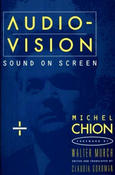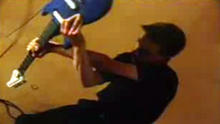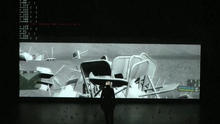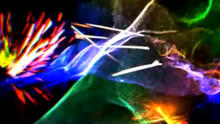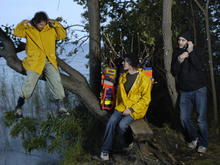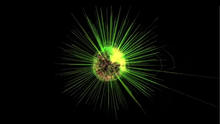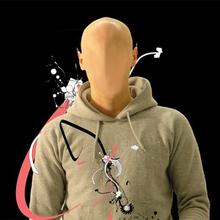Holger Hiller
(*1956) is a conceptual composer, music producer, writer and video director based in Berlin. His work appeared on German independent labels as well as on Wave Records (Japan) and Mute Records (U.K).
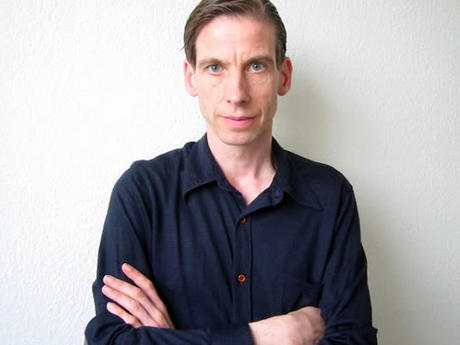
Born in Hamburg at the end of the fifties into a working class background, Holger Hiller becomes immersed in all aspects of pop culture at a very early age. Learning classical guitar, he develops a love for the music of Johann Sebastian Bach.
At around 12 years Holger meets the influential band Faust and gets into contact with the experimental life styles of the late sixties. This leads to an interest in the works of Sigmund Freud and the creative method of "automatic writing" in Holger's teen years. Due to his unstable family background Holger drops out of school and plays guitar and violin in a number of local bands. In 1976 he is being taught concept improvisation by Lilli Friedeman, a pupil of the German composer Paul Hindemith and despite their age gap, she is over 70 years old, the two develop a close friendship. In the process Holger becomes familiar with the work of orchestral composers of the twentieth century.
The arrival of punk in Germany in 1978 proves to be inspirational and Holger develops his own vision of how the DIY approach of the movement could be adapted to defining a new identity to German music. The result is the founding of Palais Schaumburg in 1980, a band whose unique sound and lyrics become one of the major influence among German musicians and artists during that period. Synthesizer and rhythm machine are introduced to construct the overall sound, while Holger's texts provide a network of complex textures of meaning.
Holger gets a chance to enroll for art school, and becomes interested in the cultural theory of Walter Benjamin and the video art of Nam June Paik. Always eager to experiment in many different directions, he composes a short video opera in 1982 together with Andreas Dorau as well as supplying its libretto.
He leaves the group Palais Schaumburg in 1983 and embarks on a solo career, with the release of the debut, Ein Bündel Fäulnis In Der Grube, an album ahead of its time which pioneers the use of sampling and cut up style lyrics.
Hiller moves to London, after an extensive stay in Tokyo, which sees him tour Japan and Europe with synchronised video projections. As samplers and computers become available to a wide audience, Holger applies the idea of montage as a major compositional principal to music and to the synchronision of sound and video. the album release Oben Im Eck in 1986, features guest vocals from The Associates' Billy Mac Kenzie and is influenced by a wide range of diverse artists such as Frank Zappa, Einstürzende Neubauten and Kurt Weill.
Back in London in 1988, Hiller produces a music video in collaboration with the video artist Akiko Hada entitled Ohi Ho Bang Bang. It is composed from film cut-ups of him and Karl Bonnie making noises on anything from squeaking chairs to banging pianos, these sounds being turned into music entirely by the editing process of the video.
Due to low sales and continuing financial pressures Holger works in the studio of Mute Records as a music editor, operator and remixer. Here Holger absorbs the upcoming trends of electronic dance music. The theoretical work of Roland Barthes and Frederic Jameson become the main influences in Holgers intellectual reflections on contemporary cultural production. His album release As Is, reflects theses influences but does not manage to create the kind of unity of his earlier work. While realising this, Holger decides to take things further, rather than to revert to safe ground and releases Demixed the following year, a dance-remix style deconstruction of his work and collaboration with DJ AJ of Renegade Soundwave. As his financial situation worsens, Holger commutes between London and Germany, making music for TV commercials.
In 1995 Hiller releases a very personal audio documentary entitled Little Present which detailes his visits to his five year old son in Tokyo. Although separated from the child's mother, the two are very close and when the boy moves to London in 1997 Hiller gives up music for three years to spend more time with him.
During this time Holger is involved in a variety of projects, electronic music workshops and an art exhibition at the Pudel Club in Hamburg. He works extensively on producing an album for the female vocal group Azucar Letal in Havana, Cuba, as well as developing and launching a new Latin crossover style called Electrolatino and recording an album for Mute Records.
The year 2001 sees Holger going through financial and personal crisis, during which he moves to Berlin, to take a long creative break. Here he becomes co-founder of the society for African Philosophy (Gesellschaft für Afrikanische Philosphie), aimed to increase awareness of African thought in the German speaking world.
Holger produced a number of blueprints equally friendly to the mainstream while staying fairly avant-garde by his principle creative standards. He has contributed to the search for identity in German popular music, as well as to the application of montage principals and integration of diverse styles into global contemporary music through his personal vision.
Source: Holger Hiller's website
